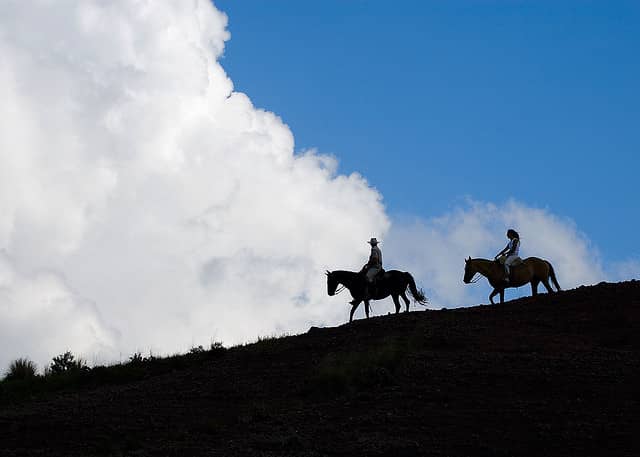Tips for First Time Horseback Hunters
Pursue The Outdoors 06.28.11

Your first horseback elk hunt can be a daunting endeavor— especially if you’re new to horseback riding. Still, with a little preparation, there is no reason to fear the saddle. Just take a look at these tips and you’ll save you (and your horse) a lot of wear and tear (and stress).
- Consider taking a riding lesson before your hunt. Learn the basics of mounting and dismounting, reins, leg cues, proper balance and body position. A horse is not an easy chair – a little preparation and skill are required.
- Be realistic. Even though your horse can carry you over difficult terrain, it cannot carry you over impossible terrain. You’ll need to hike across the steepest, roughest areas. Hopefully, you’re in shape.
- Stirrup length should be adjusted at the trailhead. Don’t be bashful about insisting on a comfortable fit that allows you to stand up slightly in the stirrups. Having your knees hunched up can be miserable for you and your horse.
- Horses are a means of transportation from point A to point B, not to the elk. Don’t expect to shoot from atop your pony like Buffalo Bill. In fact, firing a rifle anywhere near horses can be disastrous. Your actual hunt will need to be on foot.
- Think about clothing. Bring boots that fit easily into stirrups and wear clothing that allows you to mount and dismount easily. For example, coveralls constrict motion and should be avoided. Keeping quiet and warm are factors, too, and wool clothing is both even when wet. Also bring a broad-brimmed hat to help ward off branches to the face and snow down the neck.
- Let your guide do the saddling and unsaddling. Often hunters want to help but end up improperly cinching, dragging saddles through mud, disassembling bridles down to the last buckle, etc., causing extra work for the guide. Don’t pretend knowledge of horses and tack if you have none.
- Always let your guide tie up your horse for you. Improper tying can result in a dead or injured horse if they get choked or tangled. More commonly, hunters return to find only the guide’s horse still there. That could mean a long hike back for one of you.
- Bring a rifle that fits easily into a scabbard. Oversized scopes or bipods will require disassembly and are impractical. If in doubt, ask your outfitter to recommend appropriate rifles and other gear.
- Bring what you need, but you don’t need the kitchen sink. Nearly every elk outfitter has funny stories about hunters who insisted on packing things like ice skates, bowling balls, bathrobes, business suits and other nonessentials. But it’s really not funny – overloading is hard on a horse’s loins and kidneys.
- Wallets in pants pockets tend to work themselves out when you’re riding a horse. Keep your elk tags and personal identification inside your shirt pocket.
There you go. Keep these tips in mind and you’ll be riding down elk in no time

